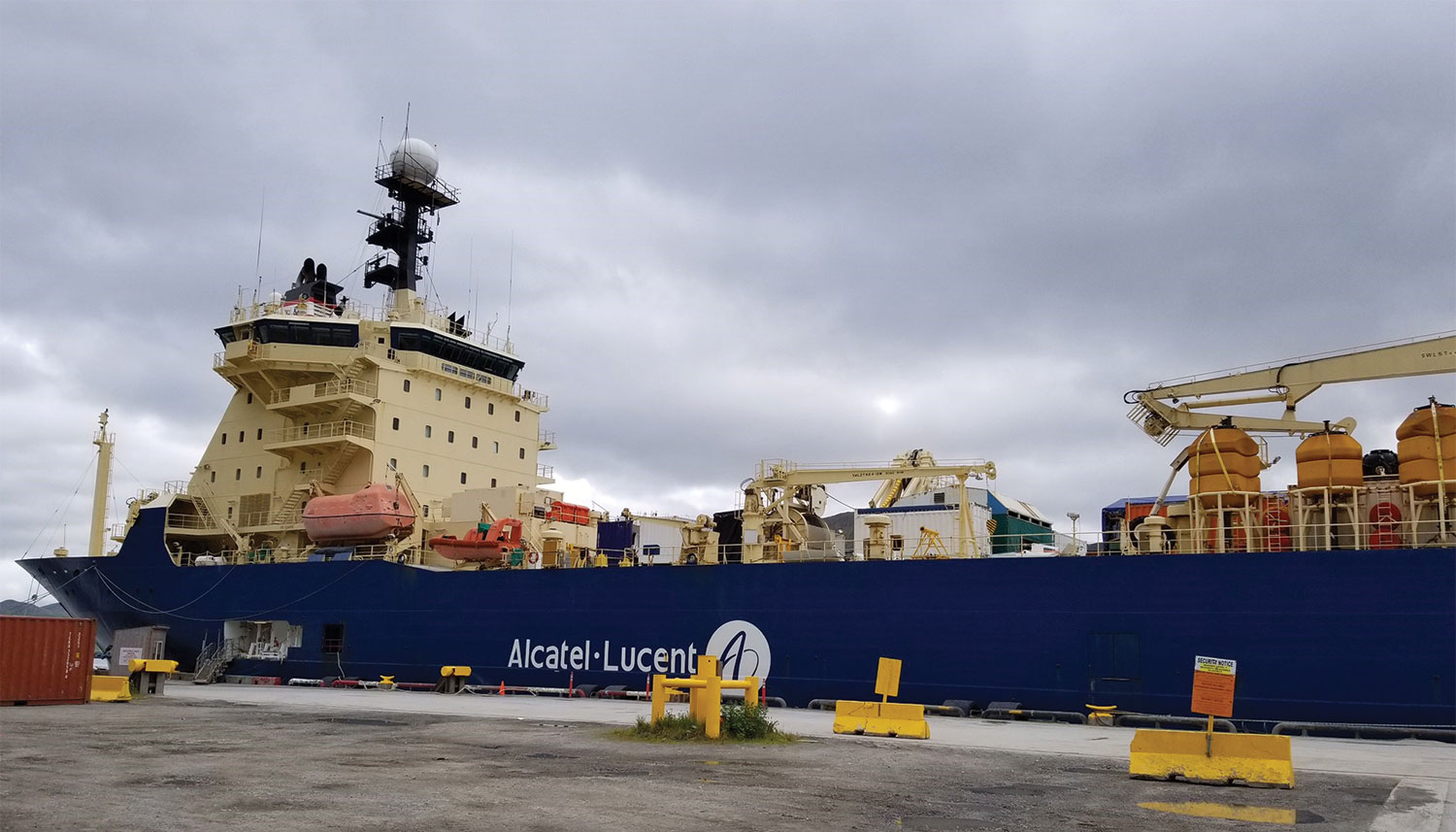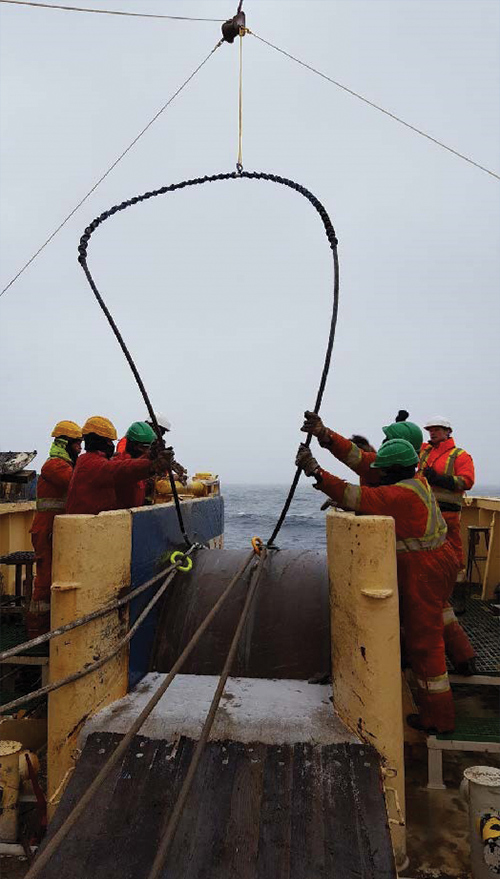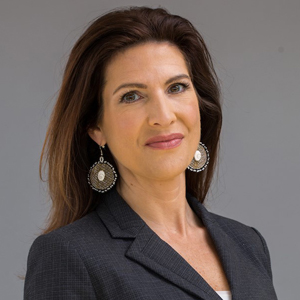
Alaska: The Next Digital Crossroads
By Kristina Woolston
As I look at a world map, it’s easy for me to see why Alaska’s largest city once dubbed itself the ‘air crossroads of the world.’ Starting in the 1960s, as many as seven different international airlines stopped in Anchorage to refuel on their way back and forth to Asia. Commercial airlines now routinely cross the Pacific nonstop, but it’s been interesting for me to watch as major cargo carriers UPS and FedEx make Anchorage an anchor in their systems, forging strategic inroads into the burgeoning Asian market.
Thanks to this strategic point on the globe, I get to witness Alaska become a ‘digital crossroads of the world,’ serving as the midway point of a new fiber optic cable system that will connect Asia and Europe through North America. A few hundred miles north of my hometown, a critical first phase of this project is already complete in Alaska’s Arctic.
As with air travel, digital communications benefit from shorter distances. The less distance data-embedded light must travel, the quicker it will arrive at its destination. The shorter distance between Europe and Asia through the Arctic off the northern coast of Alaska and Canada can shave precious milliseconds off the typical transit time. There are more direct subsea and land routes, although they aren’t practical alternatives.
I know the idea of installing subsea fiber optic cable through the Arctic has been around for at least two decades. Our small Anchorage-based startup company, Quintillion, has been able to install fiber optic cable in areas where it wasn’t possible before. Last summer, the last of the more than one thousand miles of cable was installed and on December 1, Quintillion turned up high speed internet capacity to five rural Alaska communities.
To understand the magnitude of this undertaking, a person needs to have a sense of the enormity and remoteness of my state. I live in a cosmopolitan city of 300,000 people, but the Last Frontier has 255 remote, non-road-connected communities spread over 600,000 square miles. The distance between communities along with the Arctic climate and geography present unique challenges to infrastructure development, particularly in telecommunications.

These isolated communities epitomize the term “digital divide.” It’s shocking to me that the vast majority are without reliable, affordable, high-speed broadband or any kind of cell service. Current technology serving the Bush is inefficient by modern standards, and will become increasingly inadequate as the demand for broadband increases. This is severely affecting the ability of rural communities and their residents to realize opportunities that exist almost everywhere else in the United States (U.S.).
Throughout the past 20 years, the Lower 48 has seen the deployment of high speed broadband, 3 & 4 G wireless services, and IT Cloud services grow and become commodity expectations for both consumers and businesses. However, these same modern products and capabilities have eluded these northern Alaska communities, where the cost of inferior broadband delivered over satellite and microwave is 185 times the U.S. average!
I’ll share some examples of the impacts. Until Quintillion brought fiber, data speeds were not sufficient for health providers using electronic health records. State-of-the-art hospitals and clinics in many rural hub communities have the latest medical and imaging equipment, but it hasn’t been effectively utilized due to the lack of available bandwidth. A rural hospital could take a Computerized Tomography (CT) scan of a patient, but the digital image could not be sent for evaluation due to the absence of proper bandwidth. Instead, patients needing a CT scan had to be medevac’d to Anchorage, at upwards of $100,000 per trip. I can report that adequate, affordable bandwidth is eliminating the need for many of those costly trips and saving valuable time.
As with health care, education in these isolated communities is extremely challenging. Being able to leverage virtual classrooms and online training programs can substantially improve education programs and available curriculum without adding substantial cost. Access to state-of-the art-training and materials will help attract and retain quality teachers, a significant challenge in our state, especially in remote, austere communities.
For consumers, the change is just as vivid. One resident of Wainwright, population 600, told me that before Quintillion went live, it took him a day and a half to download Windows Anniversary Edition. Others joked to me that as they tried to download a movie they had to wait through seemingly endless buffering and forgot which movie they were watching.
Our network is now providing access to high speed broadband capacity for telecommunication service providers at lower cost and improved quality of service than existing satellite and microwave options. Quintillion’s infrastructure is enabling isolated communities to connect to the outside world. My take on history is that true high-speed internet spurs innovation and economic development.
In the first months of service, we’re thrilled to see that residents are already seeing benefits. One school has seen its internet bill cut by two thirds. Downloads are faster. Businesses are able to order supplies faster. One community has a public center offering free wi-fi and video conferencing. Artists are planning to sell their crafts online. In Nome, finishing point of the famed Iditarod Trail Sled Dog race, city leaders believe Quintillion’s system will hasten its quest to build a deep-water port to accommodate cruise ships.
In addition, Quintillion’s new terrestrial fiber, installed last year between Fairbanks and Prudhoe Bay, connects these northern Alaska communities to the Pacific Northwest, as well as serving the Prudhoe Bay oil fields, North America’s largest oil and gas field. As Alaskans, we’re celebrating increased oil and gas exploration and production prospects both onshore and offshore, creating even more opportunity where we built our world-class network.
Completing the Alaska phase is a significant step for Quintillion’s groundbreaking project. The design took years. Every inch of the ocean floor route was analyzed and mapped. We hired the best in the business to construct and install the cable, all of it buried in the seabed employing a variety of installation techniques, including 2-, 3-, and, for the first time, a 4-meter sea plough. At the shore-end, the cable is buried in steel conduit up to 24 meters deep to protect against interference from humans and natural conditions in the Arctic, as well as to protect the coastline from activity that would contribute to erosion.
We worked closely with co-management groups to schedule installation in consideration of marine mammal migratory patterns. My company further invested in the protection of marine life by employing full-time Protected Species Observers to monitor the presence of Arctic wildlife 24/7.

The Quintillion team, including the roughly dozen contractors and service providers, overcame considerable challenges, including operating in a short, harsh and unpredictable Arctic construction season. During the summer of 2016 there were more than 400 individuals working in five remote communities and on 13 vessels off the coast of Alaska. I am extremely proud of this accomplishment and what it will mean to these Alaska communities and beyond.
Now, we’re onto the rest of the project. The ultimate plan is to link Europe and Asia by way of Quintillion’s U.S. Arctic network. Phase II will head west from Alaska to Asia to offer a critically needed diverse, redundant communication route at speeds faster than existing transmission rates, particularly for Alaska, which currently lacks diverse telecommunications out of the state. Phase III will head east from Alaska connecting to Canada and on to Western Europe, offering the ability to deliver broadband capacity between the Pacific Rim and Europe. This will connect key financial centers and business sectors, significantly enhance connectivity speeds between key global financial centers, and provide needed redundant and diverse communication networks to the U.S. from the Arctic.
Going forward, we expect there will be opportunities to attract outside investment. Senator Dan Sullivan (R-AK) wrote in a January 2018 e-newsletter, “Recent technological investments across our state — particularly in our telecommunications industry — have the potential to turn Alaska into a global tech corridor.” I couldn’t agree more.
I read with interest when Norway recently announced it will build the world’s largest data center, Kolos, located north of the Arctic Circle. According to the Kolos website, the cold climate provides natural cooling and access to renewable power – significant factors in allowing the data center to operate at a 60% reduction in energy costs. The average annual temperature range in Utqiagvik, Alaska, on Quintillion’s network is -19° to 47°F. I’d say there are plenty of natural cooling and low-cost energy sources in this environment.
Quintillion’s faster connection will be attractive to operators of data centers that store and send information for online retailers, social media platforms, and all those devices that connect to the internet. Our state has a favorable business environment and a vast supply of land and energy. Then there’s the global race to build cable systems through the Arctic. Future subsea cables that cross the Arctic would be well served to connect at an international meet-me point, potentially in the U.S. Arctic. Our system is scalable, allowing it to meet future demands on an almost limitless basis.
Of course, there are strategic and national security implications in a world that is ever evolving and the geographic proximity over Quintillion’s infrastructure to both allies and potential threats to international peace and stability. An increasing amount of political attention and monetary support is directed at Alaska’s Arctic, as evidenced by the 2018 National Defense Authorization Act, which directs more than $300 million to Alaska’s missile-defense and national security preparedness.
While the market in Alaska’s communities was beyond ready for investment in a world-class fiber optic network, we are equally excited about the prospects of expanding our network footprint, services and infrastructure to deliver a unique blend of opportunities for Alaska and the global marketplace. I can’t wait to report back on the next chapter of Quintillion’s story.

Kristina Woolston works for Quintillion where she dedicates her time and attention to government affairs, community outreach and engagement for the Quintillion project, media and public relations. Prior to joining Quintillion, Kristina garnered two decades of experience in government and public affairs at the leadership level with Chenega Corporation and Donlin Creek.
Kristina was raised in Naknek and grew up commercial fishing in Bristol Bay. She earned a bachelor’s degree in Government from Dartmouth College. Kristina and her husband Tim have four children and are owners of Fat Ptarmigan restaurant and SMW Coffee Co, and have helped their youngest daughter start her own all-natural dog treat business, Charlotte’s Canine Creations.
Kristina Woolston
Vice President External Relations
Quintillion